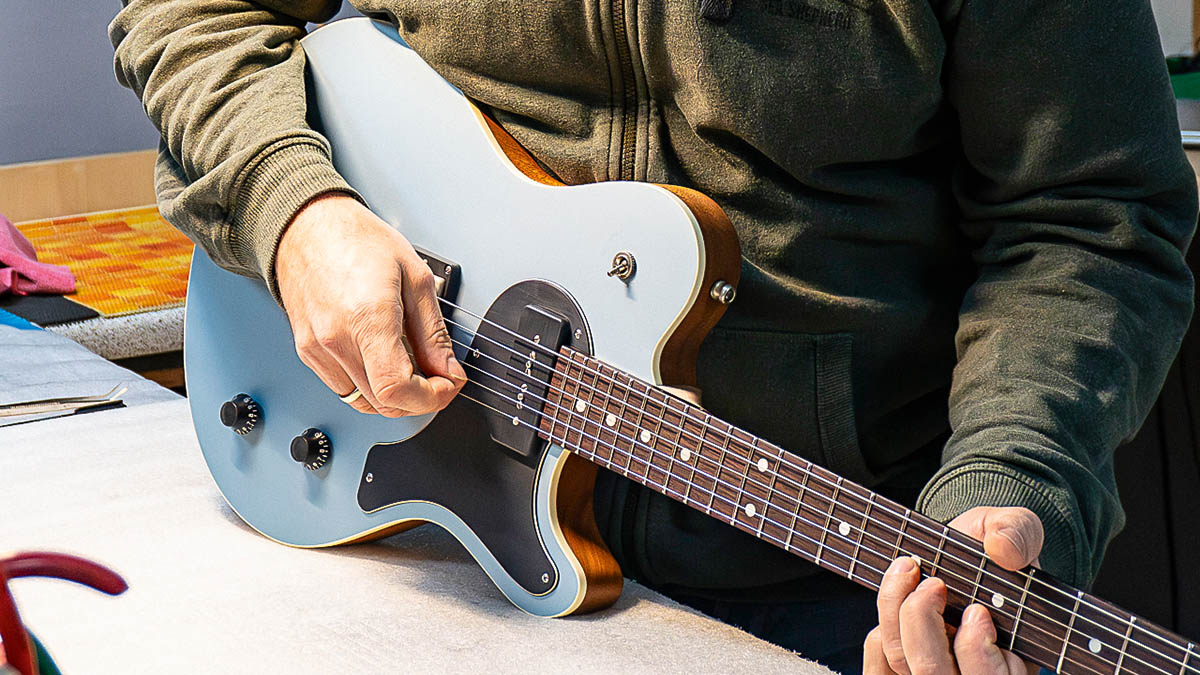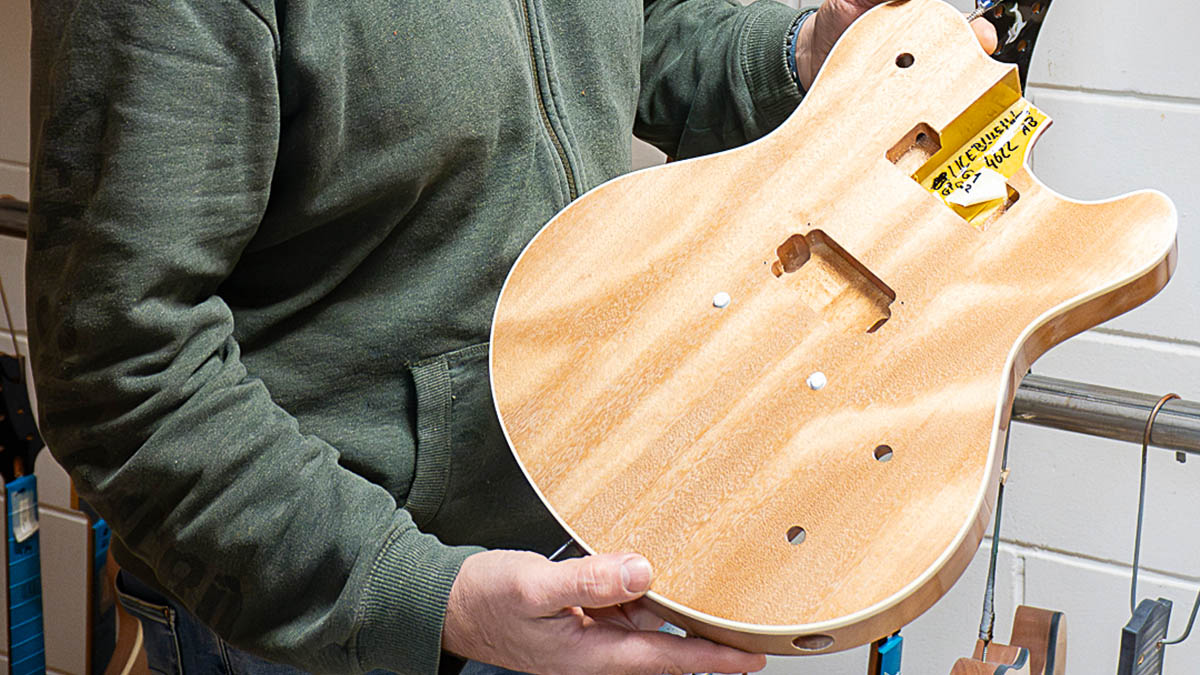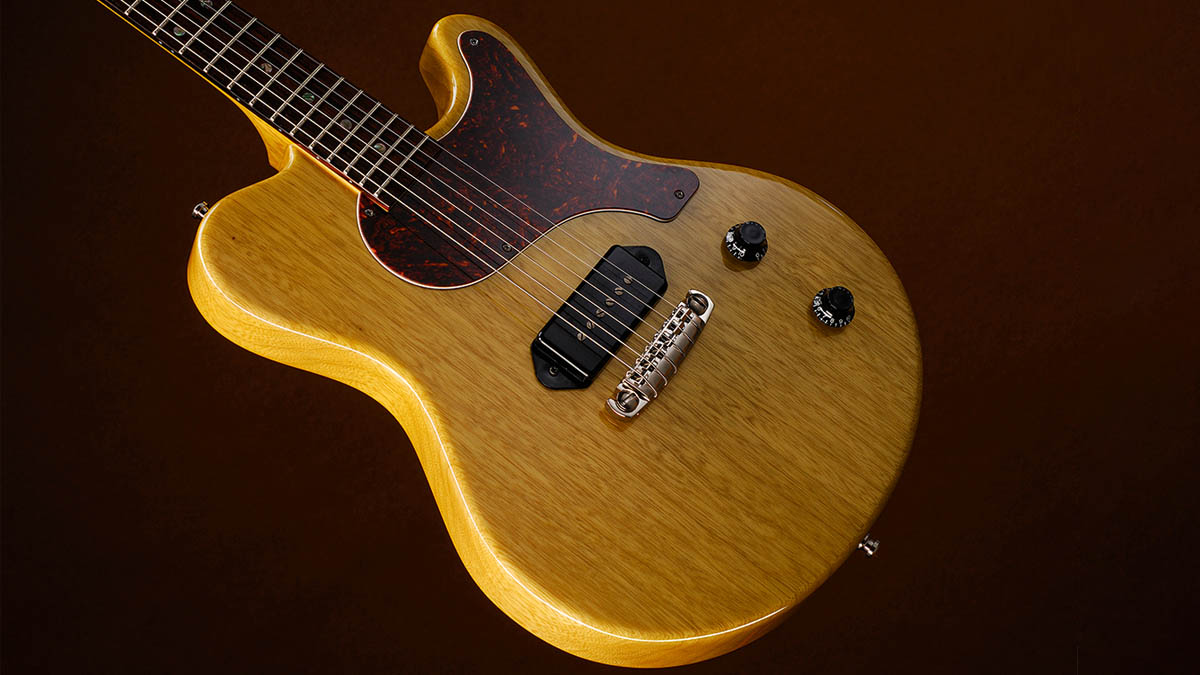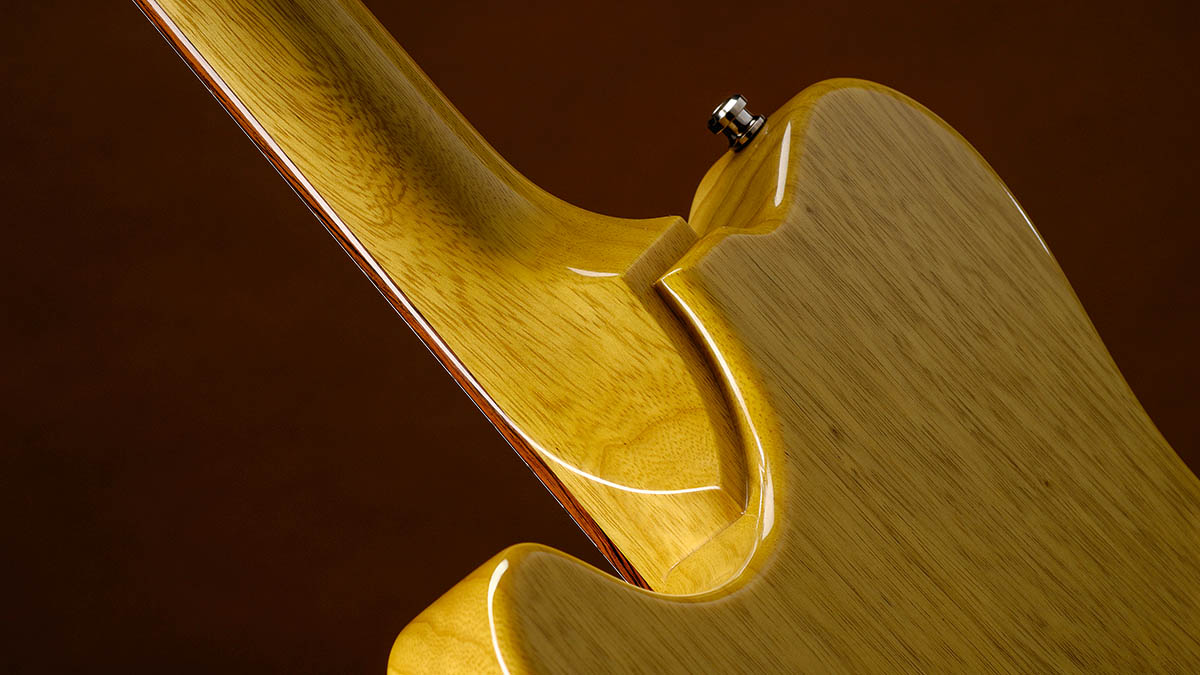“At some point I might come up with a new single-cut unique enough not to upset anybody”: Nik Huber on the perils of riffing on the classics and the evolution of his powerhouse boutique brand
There’s always the risk that someone might object to a maker’s designs. In the case of Nik Huber’s Krautster, it came 15 years after the guitar was introduced…

The dilemma for any guitar maker – large or small, new or old – is whether they, ahem, borrow someone else’s design or plough a new furrow. Many brands do both, of course. We’re not talking about creating a counterfeit, but the classic shapes from the '50s and '60s have always held an allure that is increasingly hard to shake.
Combine one of those classic outlines with a new headstock and a different pickup set and off you go. But get too close to the flame and many makers have run into trouble, with the likes of Fender or Gibson taking issue.
For a small maker, receiving a cease and desist letter from a huge heritage company is enough to make them subtly – or profoundly – change their design, even if they’re actually working within the law.
Despite introducing his admittedly Les Paul-like Orca outline back in the '90s, Nik Huber has never had any issues; after all, he’s hardly the only maker using that outline to create a new model.
“Last year I heard that Rock N Roll Relics were having trouble with Gibson,” Huber tells us, “and then Jericho Guitars, who I believe had their website shut down by Gibson’s lawyers. I then got a very friendly letter from Gibson saying that they’re aware of us and they like the quality of the guitars we build, but there is a trademark in the USA and they asked if I would be open to respect that, or if I could change the outline of the [Orca-shaped] guitars.
“I called Paul Reed Smith [who had mentored Huber in his early guitar-building days] and his lawyers; I called John Suhr’s lawyer as he had some issues when he came up with his Aura design.
To be totally honest, the Orca ’59 was just too close to a Les Paul. The Les Paul is not yet a generic shape, but if I’m in the audience at a concert I have no idea if the guitarist is playing a Huber Orca ’59 or a Gibson Les Paul
“But, on reflection, I simply thought, ‘Do I want to take a risk?’ The USA market is about 20 to 25 per cent of our business, so it’s not a really big deal. I’m sorry for all our US dealers who did well with the Orca and Krautster shapes, but I thought I’d respect Gibson’s request. I’m not in fight mode or [interested in] taking the energy and time to find out if I could still [legally] do it. I thought, ‘No, I’m not going there.’
Get The Pick Newsletter
All the latest guitar news, interviews, lessons, reviews, deals and more, direct to your inbox!
“In fact, earlier in 2023, I’d already decided to focus more on my Dolphin shape, which is what you reviewed first back in the '90s,” Huber says, reminding us of this writer’s initial encounter with his fledgling craft. “That was my first shape before I even came up with the [more Les Paul-like] Orca outline in ’96… although you can see it’s a mix of everybody,” he laughs. To that end, he successfully launched the Dolphin ’59 and the Dolphin Special in 2023.
“To be totally honest, the Orca ’59 was just too close to a Les Paul,” reflects Huber. “The Les Paul is not yet a generic shape, but if I’m in the audience at a concert I have no idea if the guitarist is playing a Huber Orca ’59 or a Gibson Les Paul.”

It’s a delicate balance, of course, because established brands are reliant on their orders, particularly custom makers.
“The last few years have only been reactive from the orders we get,” Nik says. “I wasn’t really steering my ship; it was being steered by my customers. There have been a lot of orders and that creates its own pressure. But it means creating a new guitar I might want to see is more difficult – the Krautster was one, the Piet another.
“Bernie Marsden’s guitar was, of course, something he came up with, and he obviously needed a single-cut Orca shape. But I can’t deny, speaking to you now, that at some point I might come up with a new single-cut shape that is unique enough not to upset anybody.”

We’re talking in early January, a couple of weeks before the Winter NAMM Show 2024 and Huber’s orders are “already considerable,” he says.
“We’re busy! But times are getting more difficult, I think. I see it with some of my dealers that the guitars are not selling as quickly as they did; that’s definitely recognisable. But still I have full order books. I think we currently have around 200 orders in for Krautster IIs, so I think we can survive not doing those, and Orcas, for the USA market. To be honest, though, I was close to shutting the Krautster II down completely.”
We’re rather glad he didn’t as in its Dolphin-outlined III designation it’s not only a more original design but somehow is just more Nik Huber. Quite a few customers have thought the same over the past 15 years, too: “We actually have this guitar – a Krautster II but with the Dolphin shape – on custom order quite regularly for people that love the Krautster concept but prefer the earlier shape.”
And you could suggest the new Krautster III actually goes back to the Dolphin-shaped single-pickup Huber Junior that appeared briefly from 2006. “Yes, we’ve done quite a few of those, too,” Huber agrees, “although we don’t put it on our website. We don’t want to confuse people, but we still build a few each year.”

Ironically, the original Krautster, in shape and its stripped-down style, has been a recipe that’s inspired plenty of other makers over the past decade and a half.
“And other things as well,” says Nik, “but I started this whole thing back in the '90s so today I have a brand – something people know and have known for decades. While I don’t want to compare myself to brands like Ferrari or Rolex, these are companies who have always done what they did: the most expensive [or their kinds], but they have a brand that seems very heavy in influencing people in their buying decisions.
“There is resale value to consider as well, of course. I don’t want to sound arrogant, but despite the current times I’m still getting new dealer enquiries from the USA, and we do very well in Asia, too, even though, of course, people can definitely buy a nice guitar for less money.”

When we last spoke to Huber, some three years back, he had eight staff working on the guitars at his Rodgau workshop in Germany, with an output of around 300 instruments a year.
“We’re looking at 400 guitars a year now, and that means I have more people working for me. I now have 12 people building guitars, but if we were all to go for a Christmas dinner there’d be 18 of us as some of the team are part-time, like my son who does a little bit of social media work, packaging, CITES documentation, and all the other paperwork, and my bookkeeper who will do a few hours every week.”
This slow progression and the utmost attention to quality and detail are surely key factors to the ongoing demand and success of Nik Huber and his expanding team. In 2026, the company will be celebrating its 30th anniversary – not bad for, as his blog states, “a failed rockstar turned woodworker”!

Dave Burrluck is one of the world’s most experienced guitar journalists, who started writing back in the '80s for International Musician and Recording World, co-founded The Guitar Magazine and has been the Gear Reviews Editor of Guitarist magazine for the past two decades. Along the way, Dave has been the sole author of The PRS Guitar Book and The Player's Guide to Guitar Maintenance as well as contributing to numerous other books on the electric guitar. Dave is an active gigging and recording musician and still finds time to make, repair and mod guitars, not least for Guitarist’s The Mod Squad.
“Among the most sought-after of all rhythm guitars… a power and projection unsurpassed by any other archtop”: Stromberg has made a long-awaited comeback, and we got our hands on its new Master 400 – a holy grail archtop with a price to match
“It combines unique aesthetics with modern playability and impressive tone, creating a Firebird unlike any I’ve had the pleasure of playing before”: Gibson Firebird Platypus review










